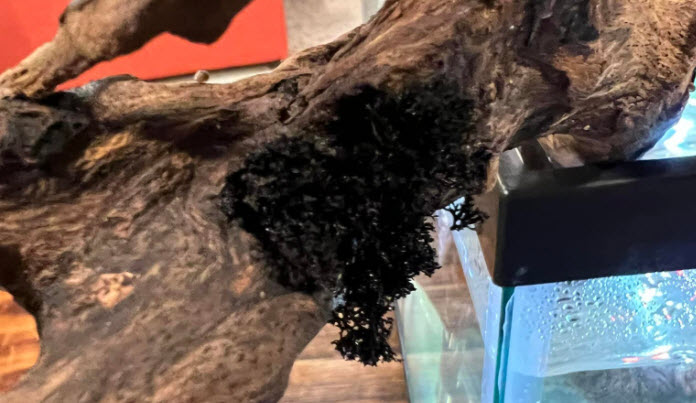
There are several things mistaken for “algae” or “fungus” which are not. This includes the water molds and slime molds covered in these links:
16.10. Water Molds
16.11. Slime Molds
But there are a few even rarer types of oddities often mistaken for “algae”. These include fissidens moss, black pellia, bryozoans and sponges.
Fissidens Moss
There is a very attractive form of moss (a plant very different from an algae botanically), which looks like a form of algae. It is called Fissidens Moss.
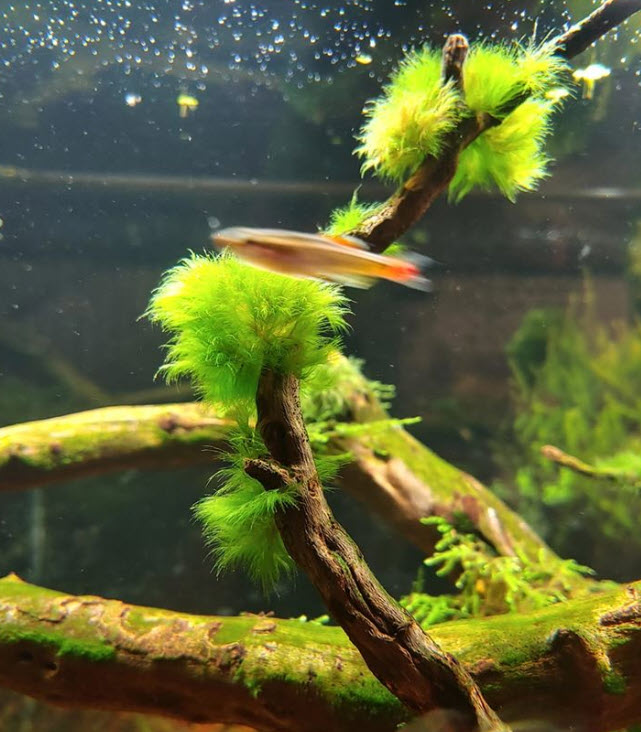
I fine this very attractive and I have deliberately propagated it in several of my planted tanks.
Black Pellia
Very rarely old waterlogged, dark, tannic acid filled wood will get a strange growth that looks like the black fronds of a “seaweed” (an ocean algae). This slow growing black growth is probably a liverwort like Monosolenium tenerum which is commonly called pellia.
Pellia are normally deep green in color. When pellia grows on wood which has a lot of tannins in it, the rhizoids (“roots”) of the liverwort absorb the dark reddish tannic acid from the wood. The dark reddish tannic acid and the dark green chlorophyll combine to produce a black color.
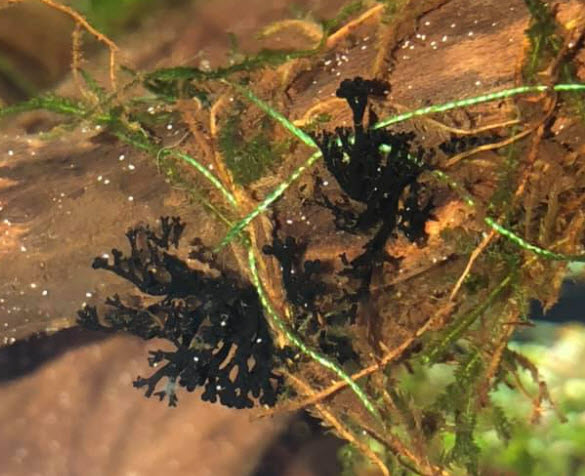
This very rare occurrence always produces a lot of mystery on social media.
My bucket list includes deliberately attaching pellia to some pieces of Mopani wood in a blackwater aquarium and seeing if I can get this black growth. I find it very attractive.
Bryozoans
Very rarely there is another “white thing” which pops up in an aquarium. This is a small branched animal called a bryozoan which builds a translucent gray colony. The colony is much like a brain in appearance. It is hard, not soft. I’ve only seen this once in an aquarium. This bryozoan is MUCH more common in ponds and lakes.
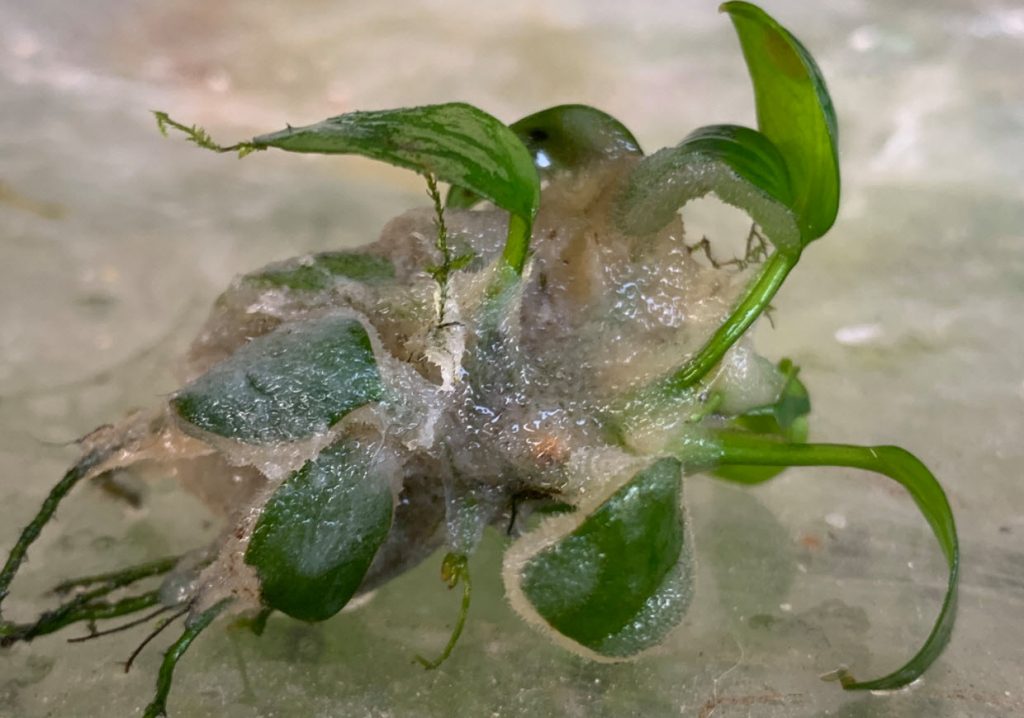
Freshwater Sponge
Very rarely there shows up something called a freshwater sponge. Sponges are harmless and can help keep aquarium water clear. The following freshwater sponge showed up in lava rock in a canister filter.
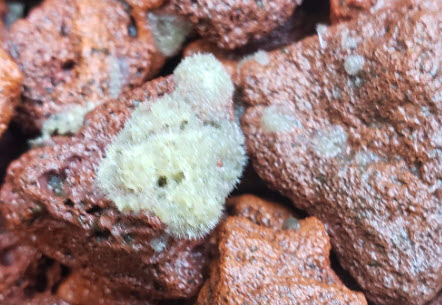
Sponges form plump rigid colonies that do not wave in the current. But the colonies are easily crushed when handled. The freshwater sponges come in many different shapes, colors and sizes. Many freshwater forms are pale brownish white in color.
Though it is not readily apparent, sponges are animals. They aren’t a single animal either. What functions as a single unit is actually a collection of individual organisms working in unison. The entire body of the sponge consists of these microscopic individuals connected by living tissue and held rigid by tiny rods made out of silica.
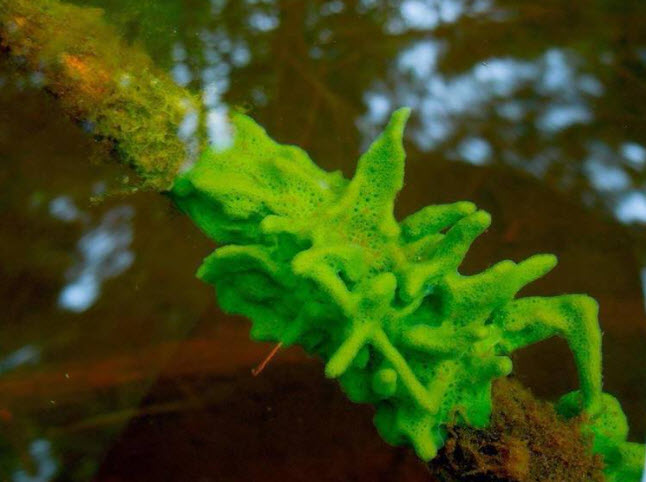
Pictured here is a species of Spongilla. The green coloration comes from algae living symbiotically within the tissue of the sponge.
.
Return to Algae Menu
.
Aquarium Science Website
The chapters shown below or on the right side in maroon lead to close to 400 articles on all aspects of keeping a freshwater aquarium. These articles have NO links to profit making sites and are thus unbiased in their recommendations, unlike all the for-profit sites you will find with Google. Bookmark and browse!
.

Leave a Reply